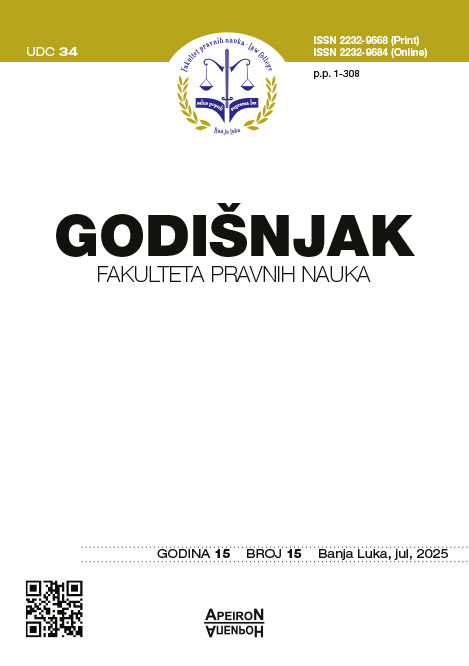The Council of Peoples of the Republic of Srpska Specifics and Misconceptions
DOI:
https://doi.org/10.7251/GFP2515030KKeywords:
The Council of the Peoples of the Republic of Srpska, National Assembly of the Republic of Srpska, vital national interest, The constituent peoples; legislative power, Constitutional Court of Bosnia and Herzegovina, High RepresentativeAbstract
The paper is dedicated to the analysis of the Council of Peoples of the Republic of Srpska, an institution that was introduced into the constitutional system of the Republic of Srpska subsequently, after the Decision of the Constitutional Court of Bosnia and Herzegovina and the decisions of the High Representative in Bosnia and Herzegovina. The Council of Peoples, together with the National Assembly, exercises legislative power, but only from the aspect of protecting the vital national interests of the constituent peoples.
In the introductory remarks, the author deals with the origin of the Council of Peoples, then analyzes its structure, organization and jurisdiction. Special attention is focused on the analysis of the protection of the vital national interest and the procedures that follow after the submission of the request by the Council of Peoples. The author normatively analyzes the actions of the Council of Peoples, as well as the current practice. In the final presentation, it is concluded that the Council of Peoples does not represent the second house of parliament, and that the interpretations that equalize the Council of Peoples of the Republic Srpska with the House of Peoples of the Parliamentary Assembly of the Federation of Bosnia and Herzegovina are groundless. Furthermore, the author analyzes the legal nature of the Council of Peoples and in the concluding remarks he points out problems related to this institution, as well as possible solutions.
